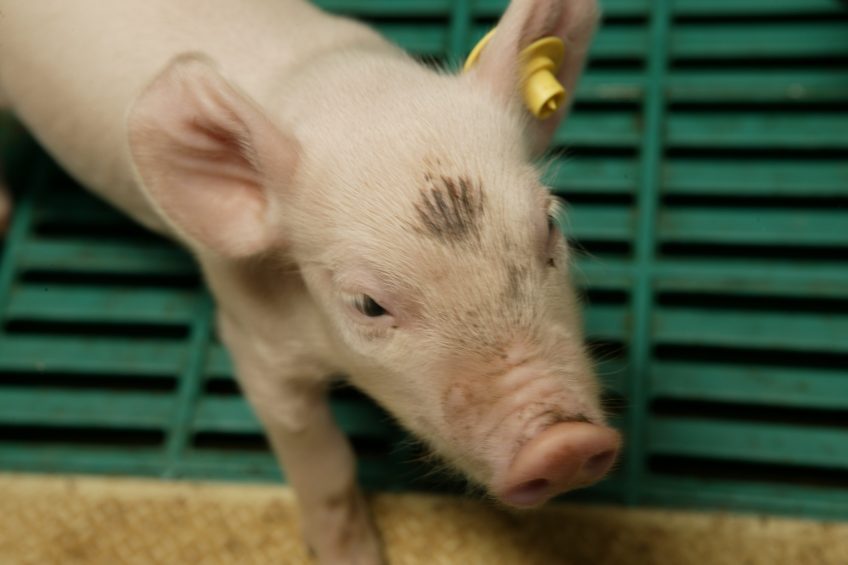Playing in pigs – does it continue after weaning?

Pigs playing is a sensitive welfare indicator in neonatal pigs, so much has once more been confirmed in new Scottish research.
In an article which was published in January 2018 in the peer-reviewed journal Applied Animal Behaviour Science, the scientists also demonstrated a ‘litter weaning effect’ where litters respond as a ‘unit’ to weaning in terms of their locomotory play behaviour.
Consistent variation in piglet play behaviour
Play behaviour in pre-weaned piglets has previously been shown to vary consistently between litters, the researchers wrote in their article. The study aimed to determine if these pre-weaning litter differences in play behaviour were also consistent in the post-weaning period.
For that, in total, 7 litters of commercially bred piglets were raised in a free farrowing system (Pig and Sow Alternative Farrowing Environment – ‘PigSafe’). They were weaned roughly at 28 days post-farrowing. Post-weaning piglets were maintained for another 4 weeks in litter groups in the PigSafe pen. The researchers adjusted analyses for sex both within and between litter as the only statistically significant covariate to play behaviour.
Litter differences in play and run
The researchers wrote that they observed litter differences in locomotor play in both the pre- and post-weaning stage and run. In total, 28% of the variance for a single observed animal in pre-weaning locomotor play and 26% of variance post-weaning could be attributed to the litter.
There was no statistical evidence of differences in social play between litters at either stage with only 8% of pre-weaning variance, and 1% of post-weaning variance being attributable to the litter level, they wrote.
Non-harmful fighting
However non-harmful fighting (the major element of social play), showed strong evidence of litter differences in both periods, and was the only aspect of the play behaviour to correlate between the pre- and post-weaning periods. On average, play increased post-weaning.
Litters showed a ‘litter weaning effect’ by differing in their locomotor play behavioural response to weaning, measured as the change in locomotor play behaviour from pre- to post-weaning.
Play behaviour before and after weaning
These results generally confirm previous work showing litter differences in aspects of play behaviour in both the pre- and post-weaning period. However, there was no consistency in litter differences between pre- and post-weaning periods in the categories of play behaviour with the exception of non-harmful fighting.
The researchers wrote that they demonstrated a ‘litter weaning effect’ where litters respond as a ‘unit’ to weaning in terms of their locomotory play behaviour. In general these results add further support to the use of play as a sensitive welfare indicator in neonatal pigs.
The research paper was authored by S.M. Brown, The Roslin Institute, The University of Edinburgh, UK; R. Peters and A.B. Lawrence, Scotland’s Rural College (SRUC), Edinburgh, UK; and I.M. Nevison, Biomathematics and Statistics Scotland, Edinburgh, UK.







